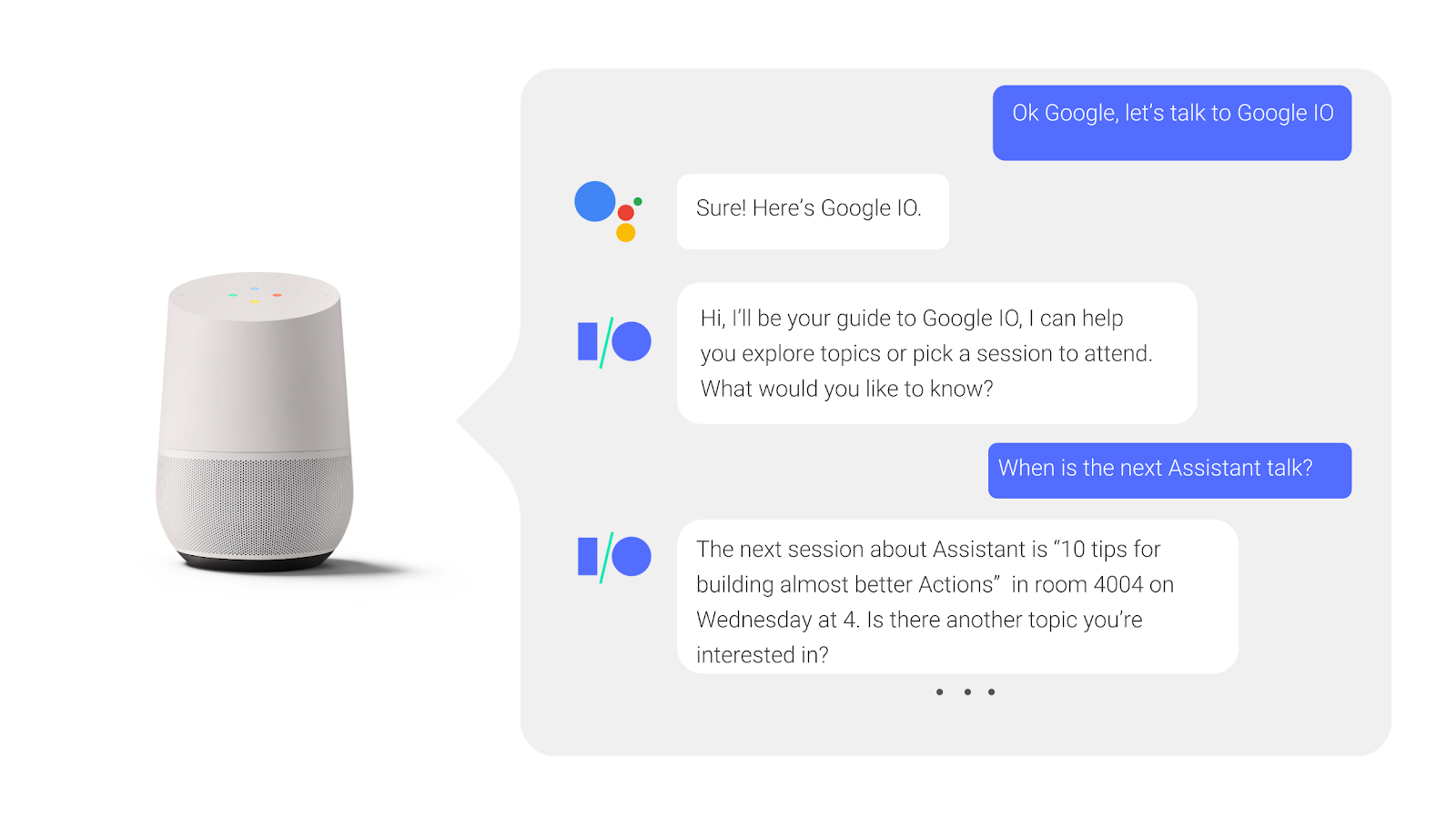对话型 Action 可让您为 Google 助理用户创建自定义体验或对话,从而扩展了 Google 助理的功能。在对话中,对话型 Action 会处理来自 Google 助理的请求,并返回包含音频和视觉组件的响应。对话型 Action 还可以使用网络钩子与外部 Web 服务通信,以增加对话或业务逻辑,然后再返回响应。

为何构建
典型的计算机界面需要结构化且可预测的输入才能正常运行,这使得这些界面使用起来不自然,并且有时难以使用。如果用户无法轻松理清这种结构化输入,就很难搞清楚该怎么做。
例如,设想一个简单的用户请求,例如“今天天气怎么样?”其他用户可能还会问“现在的天气怎么样?”或“北京明天的气温是多少?”即使面对这个简单的问题,您也可以发现对话体验很难实现,因为解释和处理自然语言需要一个非常强大的语言解析器,它要能够理解语言的细微差别。您的代码必须处理所有这些不同类型的请求(可能更多),以执行相同的逻辑:查找某个时间和地点的一些预测信息。因此,传统的计算机界面需要众所周知的标准输入请求,但这会对用户体验造成负面影响,因为这样更容易处理高度结构化的输入。
不过,当您构建对话型 Action 时,Google 助理会为您处理自然语言理解 (NLU) 功能,因此您可以轻松地构建开放式对话界面。这些界面工具可让您了解人类语言的各种细微差别,并将其转换为应用和服务可以理解的标准结构化含义。让我们来看看 Action 可能会如何处理之前的天气预报请求示例。

若要查询天气预报,您可能需要一些信息,例如用户需要天气预报的时间及其位置。不过,如前所述,不同的用户请求预测的方式可能会有所不同。Google 助理可以理解这些差异并将其转换为标准用户意图,以获取预测。然后,它可以解析用户的请求,以获取满足请求所需的相关数据。在本例中,这就是用户希望获取天气预报的时间和地点。最后,您可以使用此数据通过公共 REST API 查找天气信息,并以提示的形式将天气信息返回给用户。
何时构建
对话型 Action 最适合能让用户快速完成任务的简单用例,也适用于支持语音的沉浸式用例。良好的对话型 Action 通常分为以下几大类:
- 用户可以轻松回答的问题。可通过熟悉的输入(如时间或日期)完成的操作,如预订航班。
- 快速但实用的操作。通常,用户只需极少的时间就能立即受益,例如了解他们喜爱的球队下一场比赛的时间。
- 本身更适合使用语音的操作。这些通常是您希望无需动手就能完成的操作,例如在瑜伽或轻度锻炼期间获得指导,或者设计一款专为语音优先互动设计的游戏。
如何构建
借助 Actions on Google,您可以使用 Actions SDK 和/或 Actions Builder 构建对话型 Action。借助此功能,您可以根据自己的需求选择最佳开发工作流,同时还可以根据需要灵活地来回切换。
Actions SDK 提供了用于构建 Action 的标准化文件架构、用于与 Google 助理互动的库,以及用于部署和管理 Actions 项目的 CLI。Actions Builder 基于与 Actions SDK 相同的技术构建而成,可让您使用易于使用且强大的 IDE 进行构建。
如需了解详情,请参阅构建概览。
后续步骤
查看以下资源,立即开始构建:

